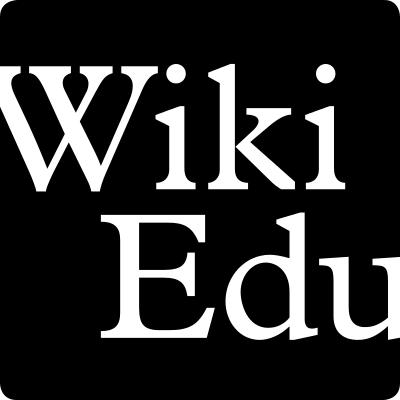Why do college and university instructors teach with Wikipedia? Creating a real-world, engaging assignment that motivates students to do the work is a big part of it. But it wouldn’t be a quality assignment unless students gained learning outcomes as part of the process. A Wikipedia assignment not only deepens students’ subject-matter understanding but also prepares them to navigate and contribute thoughtfully to the broader digital information landscape, by developing skills like digital literacy, writing and communication, and critical thinking. And, of course, Wikipedia’s quality gets better in the process.
Digital literacy
Digital literacy — the ability to discern reliable information from the unreliable on a variety of media platforms — is a fundamental skill for today’s students. When students begin to understand Wikipedia’s rigorous sourcing policies, they:
- Learn how to differentiate between primary, secondary, and tertiary sources.
- Learn how to identify sources that are reliable and verifiable.
- Learn how to identify bias in sourcing.
- Begin to understand how knowledge is constructed and how inequities in knowledge stem from ideas around sourcing.
Writing and communication
One of the most valuable aspects of the Wikipedia editing experience is that it enables students to practice public writing. Since they are used to writing traditional academic papers that are only read by instructors or a few peers, the opportunity to showcase their knowledge demands sophisticated writing skills.
When something is missing or wrong on Wikipedia, it isn’t as simple as filling in the blank or correcting the error. A student considers the kind of knowledge that can be made about a given article, in terms of who publishes about that topic, the reputation of the publication, as well as the quantity and availability of those sources. They must convey the accurate information about a subject after weighing competing claims and evidence about the topic for the purposes of communicating the state of its knowledge in a “neutral” style to a lay audience (e.g., not explicitly making arguments about how they feel about how that knowledge is made or whether it is “good or bad”).
In the Wikipedia assignment, students build writing and communication skills by:
- Identifying an audience beyond the instructor: Wikipedia’s global audience of readers
- Researching topics appropriate to the course and discipline
- Engaging in formal communication processes to share ideas publicly
- Exchanging feedback through peer review
- Adhering to ethical standards of writing to avoid plagiarism
- Drafting, revising, and editing their work.
Critical thinking
Both students and instructors in our Student Program value Wikipedia assignments for teaching critical thinking skills better than traditional coursework.
As students navigate Wikipedia’s neutrality requirements, they cultivate these skills. They must:
- Evaluate which sources are most authoritative, considering publishers, format, date of publication, and author bias
- Analyze competing claims about a subject and assess the validity of their evidence
- Accurately describe multiple, differing viewpoints and their significance, without overemphasizing any one particular viewpoint
Students present facts so readers can form their own judgment. By producing knowledge in this manner, they learn how to consume knowledge in the same way, thus developing critical thinking skills.
Interested in teaching with Wikipedia? Join hundreds of instructors who have already revolutionized their coursework by visiting teach.wikiedu.org to get started.
